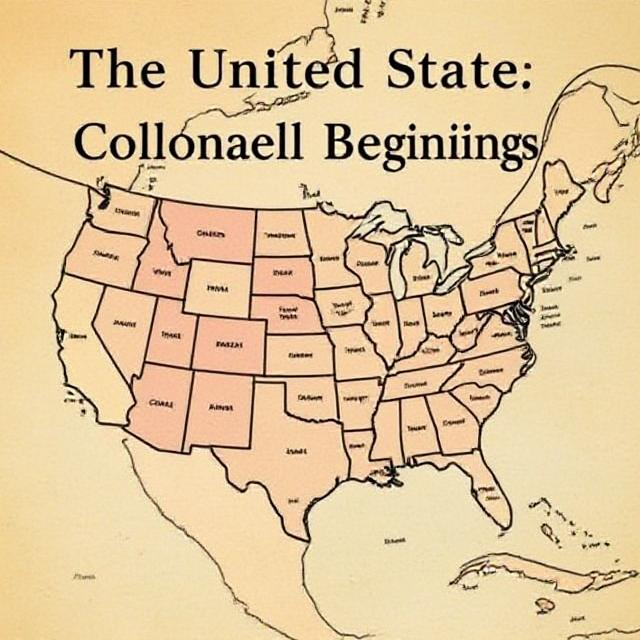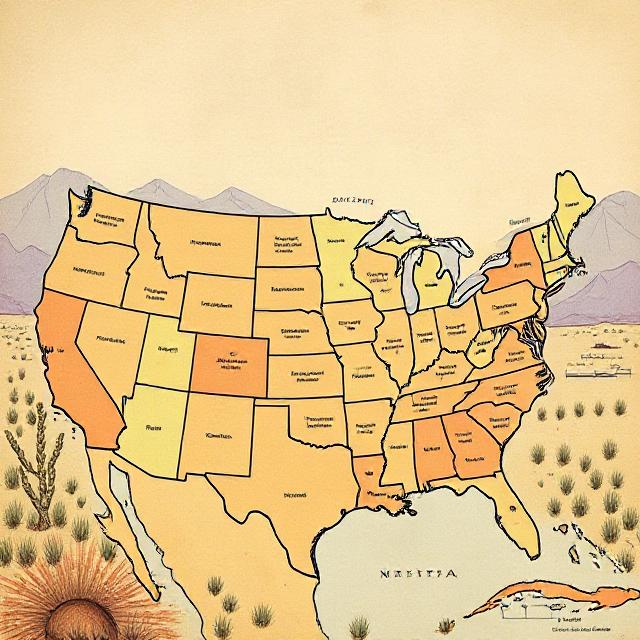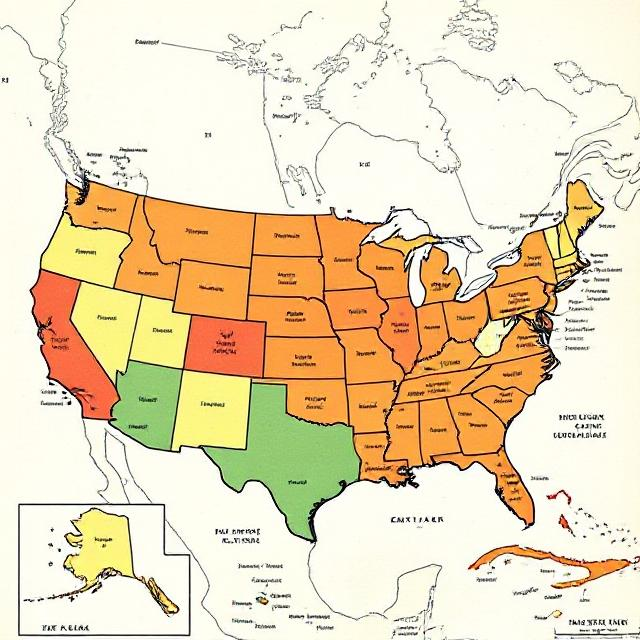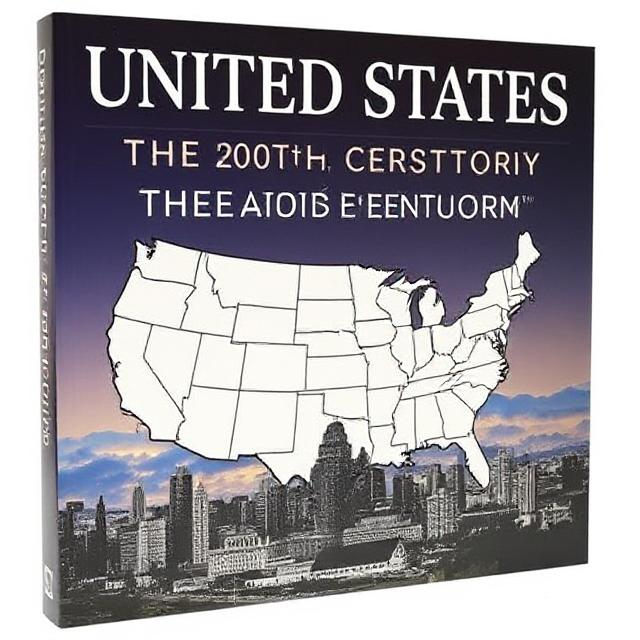The territorial evolution of the United States is a complex narrative that spans several centuries, involving exploration, colonization, wars, treaties, and purchases. From its origins as a collection of thirteen colonies to its present status as a vast nation stretching from the Atlantic to the Pacific, the U.S. has undergone significant changes in its territorial boundaries. This article explores the key events and processes that shaped the territorial landscape of the United States.
Colonial Beginnings

Early Colonization
The first European settlements in what is now the United States began in the early 17th century. The Spanish established St. Augustine in 1565, while the English founded Jamestown in 1607. These early colonies laid the groundwork for further territorial expansion.
Spanish Colonization
The Spanish were the first Europeans to explore and settle parts of North America, establishing missions and presidios in present-day Florida, Texas, and California. Their influence extended into the Southwest, where they sought to convert Indigenous peoples to Christianity.
French and Dutch Colonization
The French established a presence in the Mississippi River Valley and Canada, focusing on fur trade and alliances with Native American tribes. The Dutch settled in New York (originally New Amsterdam) and engaged in trade, contributing to the multicultural landscape of early America.
Thirteen Colonies
By the mid 18th century, the British had established thirteen colonies along the Atlantic coast. These colonies were characterized by diverse economies, cultures, and governance structures. The colonies included:
- New England Colonies: Massachusetts, Connecticut, Rhode Island, New Hampshire.
- Middle Colonies: New York, New Jersey, Pennsylvania, Delaware.
- Southern Colonies: Maryland, Virginia, North Carolina, South Carolina, Georgia.
Economic Diversity
The colonies developed distinct economic systems based on geography and resources. The New England colonies focused on shipbuilding, fishing, and trade; the Middle colonies became known for agriculture and grain production; and the Southern colonies relied heavily on plantation agriculture, particularly tobacco and cotton.
Cultural Influences
The colonies were influenced by various European cultures, leading to a rich tapestry of religious beliefs, languages, and traditions. The Great Awakening in the 1730s and 1740s sparked a wave of religious fervor, uniting many colonists under evangelical movements.
The American Revolution

Causes of the Revolution
Growing tensions between the colonies and Great Britain over taxation, representation, and governance led to the American Revolution (1775-1783). The desire for independence fueled a movement that sought not only political freedom but also territorial expansion.
Key Events Leading to Revolution
Boston Tea Party (1773): A protest against British taxation, leading to punitive measures from Britain.
First Continental Congress (1774): Delegates from twelve colonies convened to address grievances against British policies.
Lexington and Concord (1775): The first military engagements of the revolution marked the beginning of armed conflict.
Treaty of Paris (1783)
The American Revolutionary War concluded with the Treaty of Paris in 1783, which recognized the independence of the United States and established its borders. The new nation acquired territory extending westward to the Mississippi River, significantly expanding its landholdings.
Territorial Gains
The treaty granted the U.S. significant territory, including land that would become part of modern-day Canada, and established the northern boundary at the Great Lakes. This marked a critical moment in the territorial evolution of the nation.
Impact on Native Americans
The territorial expansion following the revolution had devastating effects on Native American populations. Many tribes were displaced, and their lands were increasingly encroached upon by settlers.
Westward Expansion

The Northwest Ordinance (1787)
The Northwest Ordinance established a framework for the governance and admission of new states in the Northwest Territory, which included present-day Ohio, Indiana, Illinois, Michigan, and Wisconsin. It provided a method for territories to achieve statehood and laid the groundwork for future expansion.
Provisions of the Ordinance
The ordinance included provisions for:
- The establishment of a system of government for the territory.
- The promotion of education and the prohibition of slavery in the Northwest Territory.
- Guidelines for the admission of new states into the Union.
Significance
The Northwest Ordinance set a precedent for the orderly expansion of the United States and established principles that would guide future territorial governance.
Louisiana Purchase (1803)
One of the most significant territorial acquisitions occurred with the Louisiana Purchase from France in 1803. This purchase doubled the size of the United States, adding approximately 828,000 square miles of territory. It included land that would become parts of 15 states, extending from the Mississippi River to the Rocky Mountains.
Negotiation and Purchase
President Thomas Jefferson negotiated the purchase for $15 million, viewing it as an opportunity to secure land for future generations and promote agrarianism. The acquisition was controversial, as it raised questions about the constitutional authority of the federal government to acquire new territory.
Impact on Expansion
The Louisiana Purchase facilitated westward expansion, leading to increased migration and settlement in the newly acquired lands. It also intensified conflicts with Indigenous peoples, who were forcibly removed from their ancestral lands.
Lewis and Clark Expedition
Following the Louisiana Purchase, President Thomas Jefferson commissioned the Lewis and Clark Expedition (1804-1806) to explore the newly acquired territory. The expedition provided valuable information about the geography, resources, and Indigenous peoples of the West.
Objectives of the Expedition
The expedition aimed to:
- Map the territory and find a route to the Pacific Ocean.
- Document the flora, fauna, and natural resources of the region.
- Establish diplomatic relations with Native American tribes.
Outcomes
The expedition significantly expanded American knowledge of the western territories and inspired further exploration and settlement. It also highlighted the diverse cultures of Indigenous peoples and the challenges they faced from encroaching settlers.
Manifest Destiny and Additional Acquisitions

Concept of Manifest Destiny
The 19th century saw the rise of the ideology known as Manifest Destiny, which held that the expansion of the U.S. across the continent was both justified and inevitable. This belief fueled further territorial acquisitions and conflicts.
Cultural Justifications
Advocates of Manifest Destiny argued that it was the nation’s divine right to expand westward, spreading democracy and civilization. This ideology often dismissed the rights and sovereignty of Indigenous peoples and other nations.
Political Ramifications
Manifest Destiny influenced U.S. foreign policy and contributed to tensions with Mexico and Native American tribes, as the government sought to acquire more land for settlement and agriculture.
Texas Annexation (1845)
Initially an independent republic after breaking away from Mexico, Texas was annexed by the United States in 1845. This annexation heightened tensions with Mexico and contributed to the outbreak of the Mexican American War.
Background of Annexation
Texas declared independence from Mexico in 1836, establishing the Republic of Texas. American settlers, many of whom were slaveholders, sought to join the U.S. to protect their interests.
Consequences
The annexation of Texas was controversial and led to diplomatic tensions with Mexico, which considered Texas a rebellious province. This conflict ultimately resulted in the Mexican-American War.
Mexican-American War (1846-1848)
The Mexican-American War resulted in significant territorial gains for the United States. The Treaty of Guadalupe Hidalgo (1848) ceded vast territories, including present-day California, Arizona, New Mexico, Nevada, Utah, and parts of Colorado and Wyoming, to the U.S.
Causes of the War
Key factors leading to the war included:
- Disputes over the Texas-Mexico border.
- The desire for territorial expansion by American settlers and politicians.
- The belief in Manifest Destiny.
Treaty of Guadalupe Hidalgo
The treaty formally ended the war and established the Rio Grande as the southern border of Texas. It also included provisions for the U.S. to pay Mexico $15 million and assume claims of American citizens against the Mexican government.
Gadsden Purchase (1853)
The Gadsden Purchase further expanded U.S. territory by acquiring land from Mexico for $10 million. This purchase included parts of present-day southern Arizona and New Mexico, facilitating the construction of a southern transcontinental railroad.
Rationale for the Purchase
The U.S. sought to secure land for a southern railroad route, which was deemed essential for economic development and westward expansion. The purchase was negotiated by James Gadsden, the U.S. ambassador to Mexico.
Impact on Relations
The Gadsden Purchase was one of the last significant territorial acquisitions before the Civil War and reflected ongoing tensions between the U.S. and Mexico.
The Civil War and Reconstruction

A. Impact of the Civil War
The Civil War (1861-1865) had profound effects on the territorial landscape of the United States. While it primarily focused on issues of slavery and states’ rights, the war also influenced the governance of western territories.
Creation of New States
During and after the Civil War, several territories sought statehood. States like West Virginia (1863) were created as a result of the conflict, reflecting regional divisions and the complexities of statehood.
Changes in Governance
The war led to changes in governance structures in the territories, as the federal government sought to assert control and promote loyalty among newly admitted states.
Homestead Act (1862)
The Homestead Act encouraged westward migration by granting 160 acres of public land to settlers who would cultivate it for five years. This act played a crucial role in populating the West and shaping its development.
Provisions of the Homestead Act
The act aimed to promote agricultural settlement by providing land to individuals who met specific criteria, including being at least 21 years old and a U.S. citizen or intending citizen.
Impact on Settlement
The Homestead Act facilitated the rapid settlement of the Great Plains and the West, leading to the establishment of farms, towns, and infrastructure. However, it also resulted in the displacement of Native American populations.
Reconstruction and Statehood
During the Reconstruction era, several territories sought statehood. Colorado, Nevada, and North Dakota, among others, achieved statehood in the late 19th century, contributing to the overall territorial integrity of the United States.
Admission of New States
The process of admitting new states was formalized, with territories required to draft constitutions and demonstrate readiness for statehood. This period saw significant population growth and economic development in the West.
Native American Displacement
As settlers moved westward, Native American tribes faced increasing pressure and displacement. The U.S. government implemented policies aimed at assimilating Indigenous peoples and reducing their landholdings.
The 20th Century and Beyond

Alaska and Hawaii
In the late 19th and early 20th centuries, the U.S. acquired Alaska (1867) from Russia and Hawaii (1898) through annexation. Alaska became a state in 1959, followed by Hawaii in 1960, completing the current territorial framework of the United States.
Alaska Purchase
The purchase of Alaska, often referred to as “Seward’s Folly,” was initially criticized but later recognized for its vast natural resources, including gold, oil, and natural gas.
Hawaiian Annexation
Hawaii’s annexation was driven by strategic interests, including military presence and economic opportunities. The overthrow of the Hawaiian monarchy and subsequent annexation faced significant opposition from Native Hawaiians.
U.S. Territories
In addition to the 50 states, the United States holds several territories, including Puerto Rico, Guam, the U.S. Virgin Islands, American Samoa, and the Northern Mariana Islands. These territories have varying degrees of self-governance and representation in Congress.
Status of Territories
Territories are not states and do not have full representation in Congress. Residents of territories may face limitations on their rights and access to federal resources.
Ongoing Debates
The status of U.S. territories remains a contentious issue, with ongoing debates about statehood for places like Puerto Rico and Washington, D.C., as well as discussions surrounding self-determination for Indigenous populations.
Contemporary Issues
The evolution of U.S. territory continues to influence contemporary politics and social issues, including debates over statehood for territories like Puerto Rico and Washington, D.C., and discussions surrounding Indigenous land rights.
Indigenous Land Rights
Many Indigenous groups advocate for recognition of their sovereignty and land rights, seeking reparations and the return of ancestral lands. The legacy of colonization and displacement continues to impact Indigenous communities.
Political Representation
The lack of representation for residents of U.S. territories raises questions about democracy and citizenship. Movements advocating for statehood and voting rights highlight the ongoing struggle for equality.
Conclusion
The territorial evolution of the United States is a dynamic and multifaceted story shaped by exploration, conflict, and the pursuit of expansion. From its modest beginnings as a collection of colonies to its emergence as a continental power, the U.S. has continually adapted its borders and governance structures. Understanding this evolution is essential to grasping the complexities of American identity and its ongoing challenges related to race, culture, and national unity.


